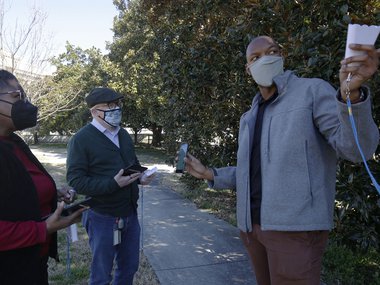Question Your World: Can Access to Nature Improve Mental Health?
Many Virginians enjoy the outdoors by breathing in mountain air, hiking our many trails, or hanging out near a favorite water spot. It’s great for our bodies, a perfect opportunity to be reunited with granola snacks, and it’s even good for our mental health. This brings up a few questions. Can nature really improve mental health? And if so, how can we increase the general public’s access to green spaces? All great questions for science to answer!
Virginia often ends up on many tourism websites for its arts and culture, foods and breweries, and most certainly for our beautiful natural resources. A quick trip to the mountains, the coast, or even one of our many state parks are all a relatively easy drive. However, for Virginians living in urban areas, getting some quality time in nature can be a little difficult. Blighted and unused vacant lots can often be found scattered all over cities and now scientists and concerned citizens are suggesting we clean them up to increase public access to green spaces! This would beautify the neighborhood, but could also improve an area’s mental health! So, how do we know that greened-up areas do indeed boost mental health?

Image credit: Getty Images
Recently social scientists in Philadelphia teamed up with a non-profit that focuses on greening up urban vacant lots as a way to increase public access to green spaces. Being scientists, while doing this, they also decided to run an experiment. In this experiment, 442 people living near vacant lots saw one of three things happen - either their vacant lot was greened up and regularly maintained, not greened up but kept cleaned up, or finally nothing happened at all. The results showed that actually the greened-up areas made a pretty big difference! People exposed to the greened-up vacant lots reported feeling much less depressed 18 months after the green intervention.
Better yet, the effect was even stronger in poor neighborhoods. These lower income neighborhoods are also some of the most vulnerable places in urban areas for heat-related issues, access to water, and shade from trees. Adding some green spaces in these economically depressed areas could really bring up health standards, simply by reconnecting individuals to nature when possible. These small public green spaces or mini-parks make for an easy place to get some recreational time, get to know the neighbors a bit more, provide shade for hot days, and in general, help bring up mental health levels.
Furthermore, scientists also know that adding green infrastructure reduces urban heat that contributes to heat-related illnesses. Developed areas, as well as unused vacant lots, greatly contribute to the urban heat island effect. This has serious implications for heat-related illnesses, especially if one does not have access to ways to cool down or has trouble dealing with the heat for medical reasons. These concrete and asphalt-heavy vacant lots also increase rainwater runoff carrying toxins into our waterways. These issues then stress a city’s stormwater management systems and can allow dangerous wastes to run into our streams and waterways during storms.
Finally, in addition to all of these benefits, greening up vacant lots comes with an extra bonus benefit. We all know that plants take in CO2 and pump out fresh and lovely oxygen, right? Meaning that if we green up more vacant spaces, we can improve air quality as well, so the benefits just keep coming. There you go, proof that green spaces can improve mental health ... much like eating granola.

